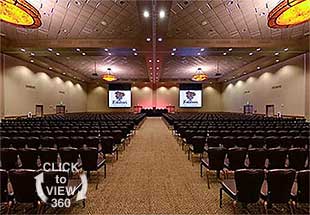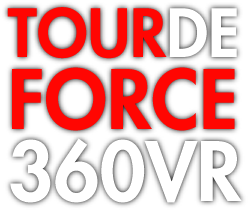
Compare still vs 360VR
Pool Room, Milwaukee, WI

Compare still vs 360VR
Kalahari Grand Ballroom, Sandusky, OH
Still images and video are flat and passive. The viewer remains an outside observer. But the real strength of the internet is interactivity. Still and video can't leverage that.
360VR is immersive and interactive. It brings viewers into the image, into the experience, letting them interact in ways still and video can only dream of. And it's effective. For example, hotels that add 360VR to their web sites experience an increase in online bookings ranging from 60% to 100% or more. (We have the studies.)
Still images say, "Look at this (and only this)." No doubt, a photograph can be very powerful in print or on the web. It can make a bold statement, set a mood or illustrate a point. But the crop is the essence of the still image, dictating what the viewer can see and eliminating everything else.Video says, "Look at this (and this and this and this and…)." Video is particularly good at telling a story, demonstrating an activity or rapidly changing between scenes and views. But, like the still image, video dictates what the viewer will see, cropping out anything that distracts from the message.
360VR images say, "Experience this." While stills and videos control the viewer experience, 360VR gives control to the viewer. It's active, not passive, so it engages viewers on a totally unique level. What's more, instead of cropping or limiting the view, 360VR allows the viewer to look at everything in all directions. It virtually places the viewer into a location. So, it carries an extra degree of credibility. The viewer can see what a place is really like. Therefore, any time you're selling an experience, especially involving a place or space, 360VR should be an important part of your marketing toolbox.
360VR has a significant effect on Search Engine Ranking. Video has almost none if it is hosted on YourTube or Vimeo. The SEO benefit goes to those services, not your website. If video is self hosted or on some third party paid services it can provide a similar SEO advantage as 360VR, but using dramatically more bandwidth. For instance, the entire Taliesin tour in full HD uses under 30MB of bandwidth. The exact same content provided as HD video could use over 2GB, roughly 70 times the bandwidth.









